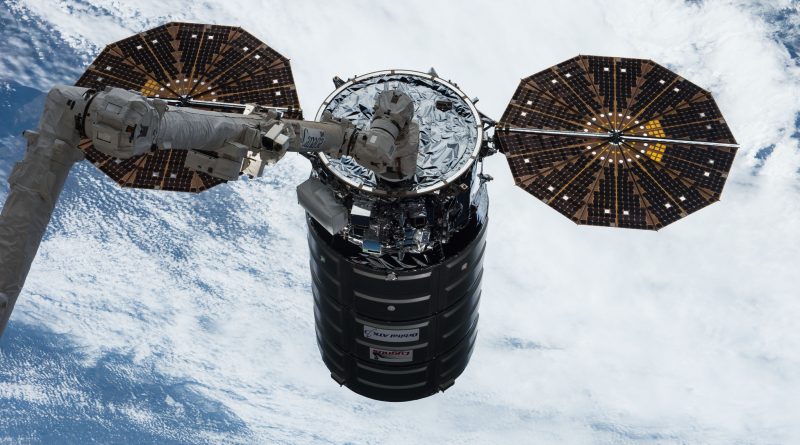Cygnus OA-7 Cargo Craft set for ISS Departure Sunday, Weeks ahead of Schedule
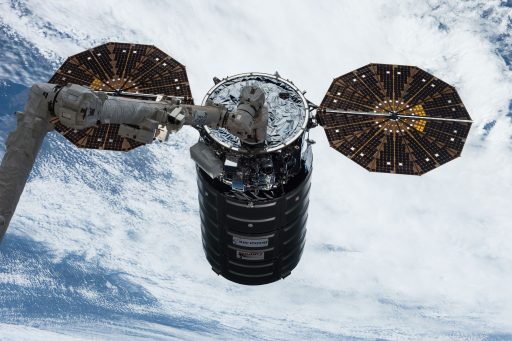
Orbital ATK’s Cygnus OA-7 spacecraft is being prepared to depart the International Space Station on Sunday – six weeks ahead of the mission’s original schedule – to head off on a week-long free flight supporting a combustion experiment and deploying small CubeSats before a fiery disposal of the spacecraft via destructive re-entry.
The seventh operational Cygnus mission began with liftoff from Cape Canaveral atop an Atlas V rocket on April 18 and the craft arrived at the orbiting laboratory four days later to mark the delivery of 3.5 metric tons of cargo. Originally, Cygnus was planned to remain berthed to the underside of the Station’s Unity module through July 16.
These plans changed on Thursday when a pre-arranged backup plan went into action to advance the spacecraft’s departure by over a month to June 4th. This decision is purely due to operational constraints and not for technical reasons as Cygnus performed admirably over the course of the six-week mission so far.
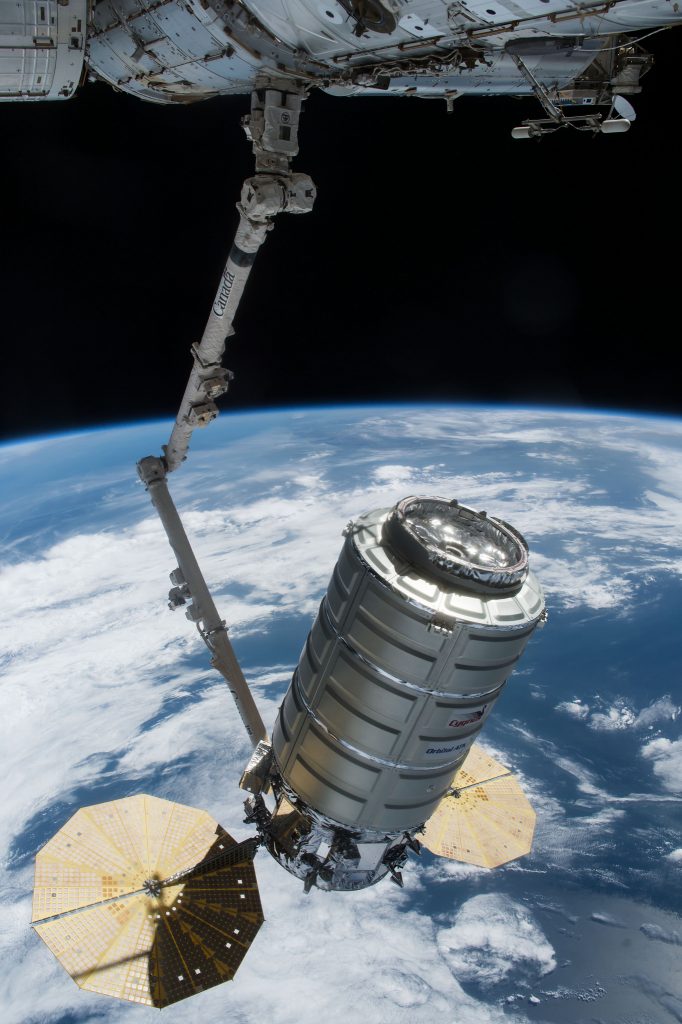
The departure of the Cygnus takes advantage of a gap created by the delay to the Dragon SpX-11 cargo mission that had to abandon a Falcon 9 launch attempt Thursday afternoon due to unfavorable weather at Florida’s Space Coast. Had Dragon launched on time, the craft would have been inbound for a robotic capture and berthing to the Station’s Harmony module on Sunday. With Dragon staying on the ground until at least Saturday, ISS managers decided to use the day on Sunday to send the Cygnus spacecraft toward the end of its mission.
The early departure of Cygnus has been made possible by an exceptional crew on ISS for Expedition 51, completing cargo transfer operations ahead of schedule through efficient work and putting in additional hours including weekend work. The SAFFIRE in-space fire experiment finished setup aboard Cygnus on May 22 and final disposal items were loaded on the 29th.
The rationale for unberthing Cygnus prior to Dragon SpX-11 arrival arises from the current staffing situation on ISS with only three crew members on board following Friday’s successful Soyuz landing and the next crew arrival not expected until late July. SpX-11 carries dozens of experiments to the Space Station, many of which have to be performed while Dragon is at ISS to return to Earth aboard the vehicle after its month-long stay – creating a busy schedule for the two U.S. Segment crew members Peggy Whitson and Jack Fischer.
The departure of Cygnus after Dragon’s arrival would have added an entire day’s worth of operations for the two crew members, thus getting Cygnus out of the way before Dragon arrives takes pressure of an already busy timeline for June/July and allows the crew to fully focus on science operations.
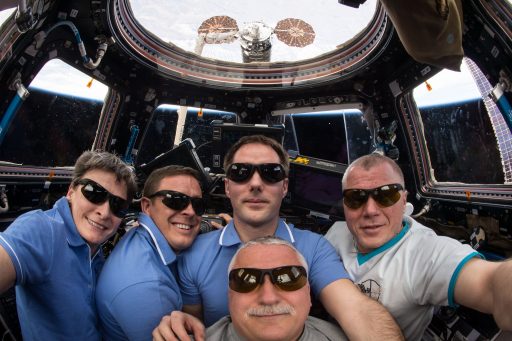
Procedures for inserting the Cygnus unberthing this weekend were drawn up prior to Thursday’s Falcon 9 launch delay and the weather-related scrub put these plans in motion. Preparations for Cygnus departure started within minutes of Friday’s Soyuz undocking when the Station’s robotic arm was maneuvered from a parked position to grasp the Cygnus Power and Video Grapple Fixture in preparation for the robotic unberthing and release of the spacecraft.
The crew went through procedure reviews on Friday and are set for a full day of work on Saturday to button up the interior of the Cygnus before closing its hatch and working through the vestibule outfitting procedure to remove power/data jumpers, air ducts and put in place four Control Panel Assemblies that drive the bolts of the Common Berthing Mechanism. Once the hatch of the Unity module is closed, the cavity between ISS and Cygnus will be depressurized for the usual leak check before the way will be clear for the removal of the cargo ship.
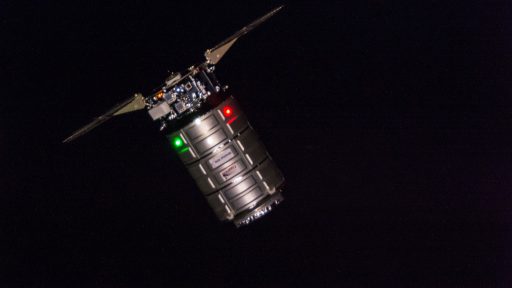
Unberthing is accomplished by releasing 16 bolts within the Common Berthing Mechanism and opening capture latches to give Canadarm2 full control of the Cygnus. ROBO controllers on the ground will then slowly back Cygnus out of its berthing port and execute a series of maneuvers to position the craft for release.
Peggy Whitson and Jack Fischer will be at the robotic controls inside the Station’s Cupola on Sunday with a direct line of sight to Cygnus. Release of the Cygnus spacecraft is expected at 13:10 UTC as capture latches and snares in Canadarm’s Latching End Effector are opened. Canadarm2 will retreat to a standoff distance of 1.5 meters and Cygnus will receive an abort command to initiate a two-minute departure maneuver taking it to a prograde trajectory, pulling out in front of the Space Station.
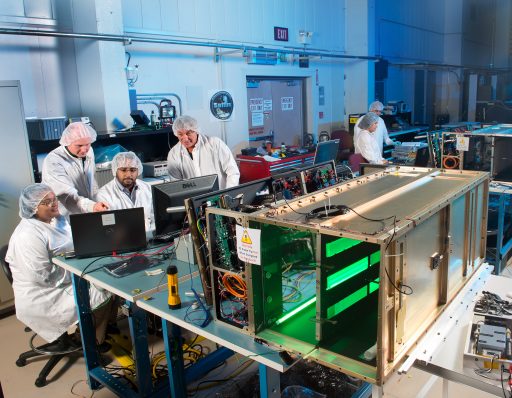
Integrated operations between Mission Control Houston and Mission Control Dulles end when Cygnus departs the Station’s Approach Ellipsoid, entering a free flight of seven days. An orbital adjustment is planned around four hours after departure to place Cygnus into an orbit independent of ISS for free flight operations that begin with the SAFFIRE-III experiment.
SAFFIRE-III is the third Spacecraft Fire Experiment after two very successful runs on the Cygnus OA-6 and OA-5 missions in 2016. The first experiment ignited the largest intentional fire ever set aboard a spacecraft to study large-scale flame spread in microgravity and learn valuable lessons for fire-proofing future crewed spacecraft.
SAFFIRE-II had a different objective and hosted nine smaller material samples to examine the flammability of different materials and thicknesses. The SAFFIRE-III experiment aboard OA-7 is similar to the first one, hosting an 0.4 by 0.94-meter cotton-fiberglass sample that will be lit on fire under different airflow conditions than SAFFIRE-I to study the influence the flow environment has on flame front progression.
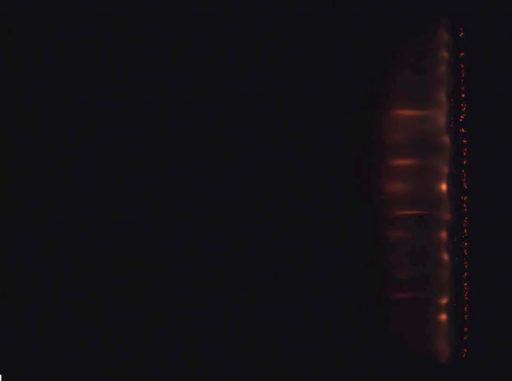
Studying fire in space at a realistic scale has been near to impossible in the past due to the obvious concerns associated with igniting a large fire on a crewed spacecraft. The SAFFIRE hardware enables large combustion experiments to be carried out safely aboard the Cygnus spacecraft after it served its primary purpose of delivering supplies to the ISS.
Insight into flame growth, temperatures and oxygen use will help improve models for combustion dynamics in microgravity as previous models used by spacecraft manufacturers employed standards for terrestrial fires which may not apply in a spacecraft.
The SAFFIRE apparatus consists of a flow duct and an adjacent avionics bay housing various sensors and associated power and data systems. Atop the flow duct is a fan creating air flow through the system and on the bottom is a grid serving as a flow straightener. Sensor data and video from the combustion experiment will be downlinked to the ground over a period of days while Cygnus remains in orbit.
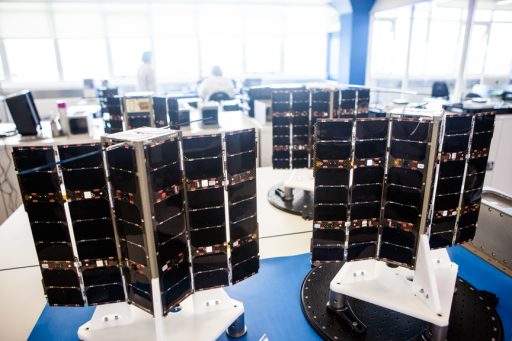
Following completion of the SAFFIRE experiment, Cygnus will execute a pair of orbit-raising maneuvers to move into a higher orbit than ISS for the release of four Lemur-2 CubeSats – giving them a slightly longer operational life than satellites that deploy directly from ISS into a 400-Kilometer orbit.
The Lemur-2 satellites are 3-Unit CubeSats built and operated by Spire Global to establish a constellation of small, inexpensive satellites in operation for a number of purposes such as Earth observation, maritime monitoring, communications, meteorology and science. Each Lemur-2 satellite carries two different payloads, SENSE, dedicated to maritime monitoring, and STRATOS for atmospheric measurements.
Cygnus will fire up its LEA main engine on Sunday, June 11 to set up for a targeted destructive re-entry over the Pacific Ocean to safely dispose the spacecraft at the end of its mission.

